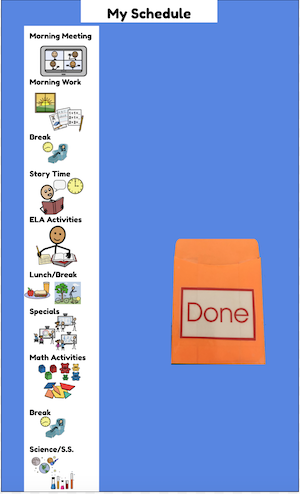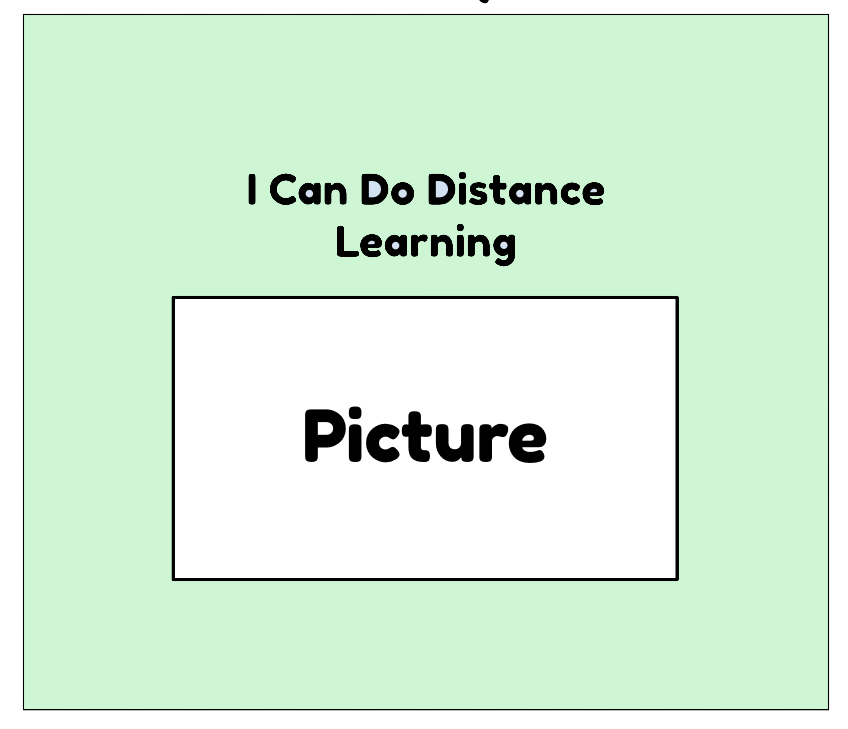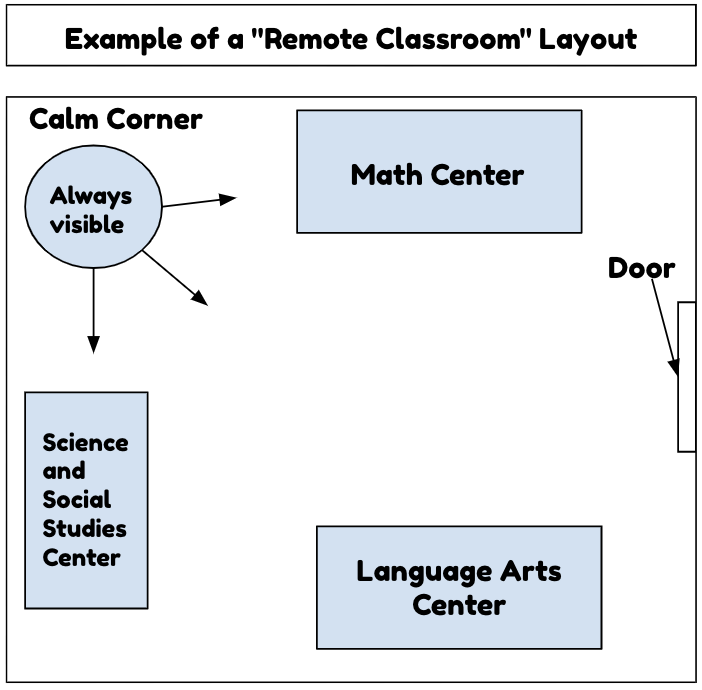Visual Schedule
- A Visual Schedule uses picture cards to show each content area/activity (in order) that a child will complete during a school day. When a child completes an activity, they move that picture card into the "Done Envelope." Children can also identify when they might need to take breaks during the day, and add break pictures to their schedule. (Make sure to communicate this to their teacher so that the transition to and from breaks can be as smooth as possible).
Resource:
- Do2Learn: Offers templates and picture cards for creating visual schedules.
Tool for Coping with Difficult Emotions
- This hands-on tool uses picture cards to help children cope with difficult emotions. To use the tool, children select four pictures: a picture card that describes the emotion they are feeling ; a card depicting why they feel that way (what happened that triggered that emotional response); a card that shows what they want/need; and a card that depicts what they will do to get what they want and need. This tool comes in 3 different skin tones and hair has been purposely left out so that your child can customize the characters' hairstyles.
Remote Learning
Social Story
- A Social Story depicts a social situation or a set of circumstances using a narrative structure to teach children how to respond to situations that may cause frustration, can be difficult to understand, or are unfamiliar. They are often used to help children cope with change and can be personalized to include a child's interests and/or make them the main character. Discussing the story and rehearsing how they would respond in that situation helps children respond more positively when the situation occurs.
Resource:
- "Coping with Covid: Remote Learning for Students with Autism Spectrum Disorder": This resource, developed by the Illinois State Board of Education, includes guides and resources for Covid-19 related soial stories, as well as a variety of other tools and resources for students with diverse learning needs.
Strategic Use of Space
- Remote learning requires children to remain seated in the same location for far longer than they are used to. One way to combat this is to carve out separate spaces in the room used for remote school for different activities. For example, make one corner of the room the language arts center; another corner the math center; and have the specific materials for each content area at that particular center. If moving around isn't possible, try making a bin for each activity and when it is time for that content area, your child will go retrieve that bin. The goal is to make the space feel more like a classroom and allow them to move around in a way that feels more like how they move in school.



